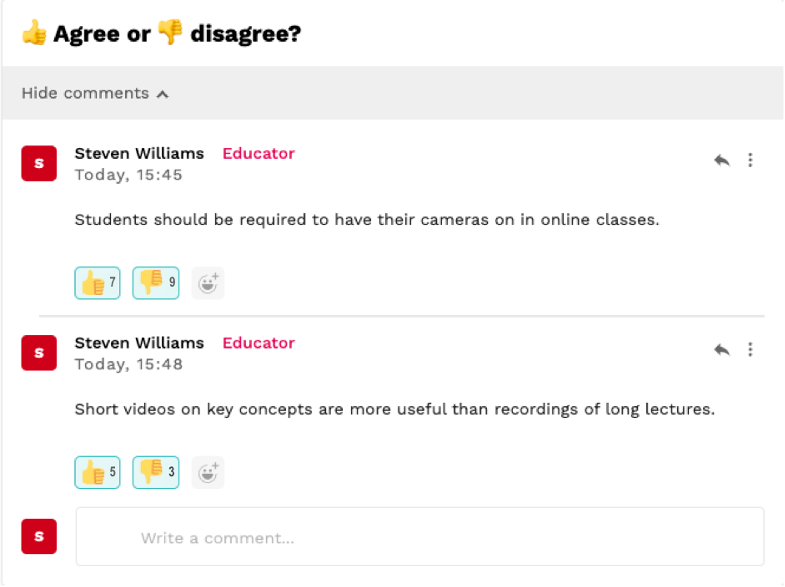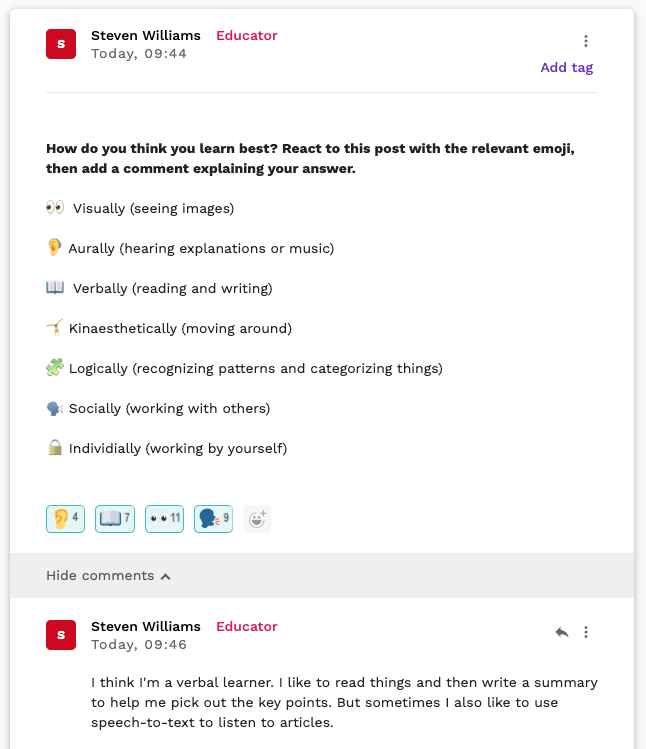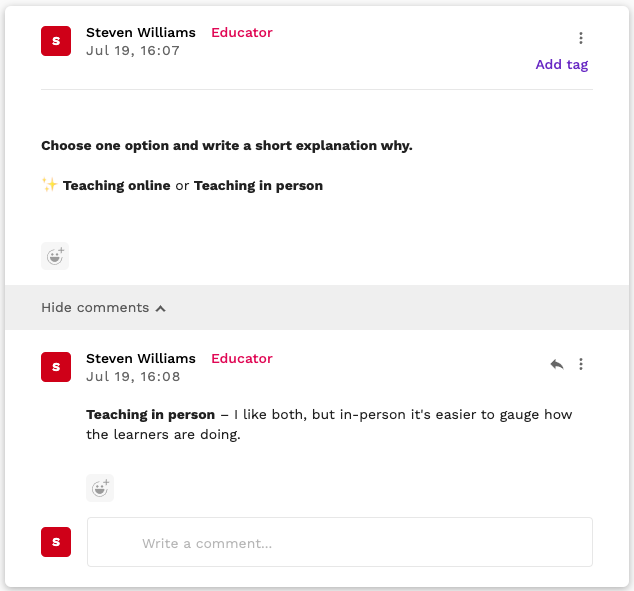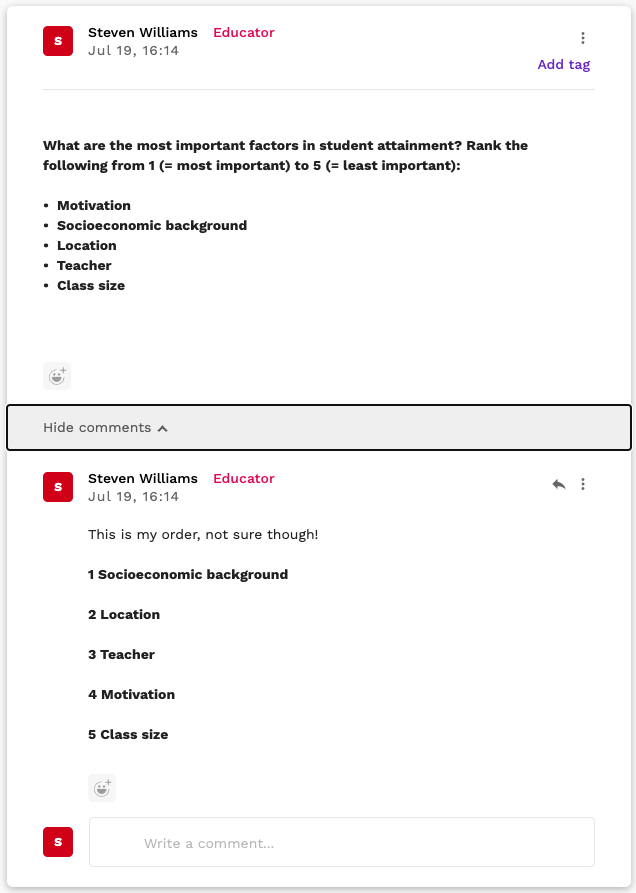Introduction
The ideas in this article are intended as quick and fun ways to increase engagement in your Aula space. I’m calling them ‘lo-fi’ because they don’t require any special tools or knowledge: they can all be done using basic post and discussion features. If you use social media platforms, you might already be familiar with many of these ideas. They work because they’re quick for students to respond to initially, but they often lead to more in-depth discussion.
Why go lo-fi?
There are lots of external tools that you can use to add interactivity to your course. If you need a formal quiz or you want to do a poll with detailed analytics, then things like Microsoft Forms or Mentimeter are great options. However, they can feel like ‘just another thing to learn’.
Here are some of the benefits of lo-fi activities:
- They’re quick for you to make and for students to respond to.
- They add some visual interest to your Aula page.
- They don’t require any sign-ups or rely on an external tool being maintained – and they can be easily copied and pasted onto another platform.
- They make the learning journey more visible as students’ answers are captured in one place. After you’ve provided some further input on the topic, perhaps in a live session, you could ask students to return to their initial answers and consider if they’ve changed their minds.
Now let’s move onto the activities themselves.
Lo-fi activities
Reactions

This activity uses Aula’s reaction feature. By clicking on the grey smiley face, students can respond to a comment with an emoji. If several people use the same emoji, a number will appear alongside the relevant icon.
Start by telling students which reactions to use and what they mean in the context of the activity. Then post several statements in the community feed or a discussion for students to react to. Here are a few ideas to start with:
👍 👎 True/False or Agree/Disagree
Post several statements and ask students to react with a thumbs up if they think something is true and a thumbs down if they think something is false. You could use this as a knowledge check before a synchronous lesson, or as a follow-up to recap key points. Another spin is to replace ‘true or false’ with ‘agree or disagree’.
😀 🤨 😞 Confidence check
Post learning objectives or key topics that you’ve covered recently and ask students to react with emoji faces to show if they’re confident / not sure / not confident. You could then follow up on areas they are struggling with.
🐕 🏗 🧠 Categorising
Post different concepts and ask students to react with emojis that represent different categories. For example, you could post ‘Learning is a social process’ and ask students to react with a dog, crane or brain to indicate if this concept belongs to behaviourist, constructivist, or cognitivist learning theories.
Emoji polls

This activity is just a variation on using reactions, but emoji polls are so useful that they deserve their own section. Pose a question, provide a list of possible answers and assign a different emoji to each one. Then ask students to react to the post with an emoji. Depending on the purpose of the poll, you could also ask them to expand on their answers with a rationale in the comments.
‘Either/or’ quick-fire questions

This is a quick way to keep engagement going between synchronous sessions, but its simplicity is deceptive. While it requires minimal input from students, the cognitive depth involved in making decisions can help to make learning sticky.
You simply pose a ‘either/or’ question and students respond with their choice and an explanation in the comments. This activity is often used to gauge people’s preferences, but you could do a meatier version by posting a scenario first. For example, you could give students a patient profile and ask them to choose from options relating to what treatments they should provide.
Ranking

Ranking activities are similar to ‘either/or’ activities, but instead of asking students to choose between binary pairs, you ask them to put several options in order. You could ask them to rank things in order of importance, personal preference, difficulty, or almost anything.
This is a great way to kick off further discussion, as it helps to identify conflicting points of view, as well as focus in on nuances.
Conclusion
Short, frequent posts are the best way to build up an active online community. The activities in this article require minimal preparation and are ideal for you to sprinkle into your Aula community feed or discussions throughout a module. Why not go away and try one out right now?

